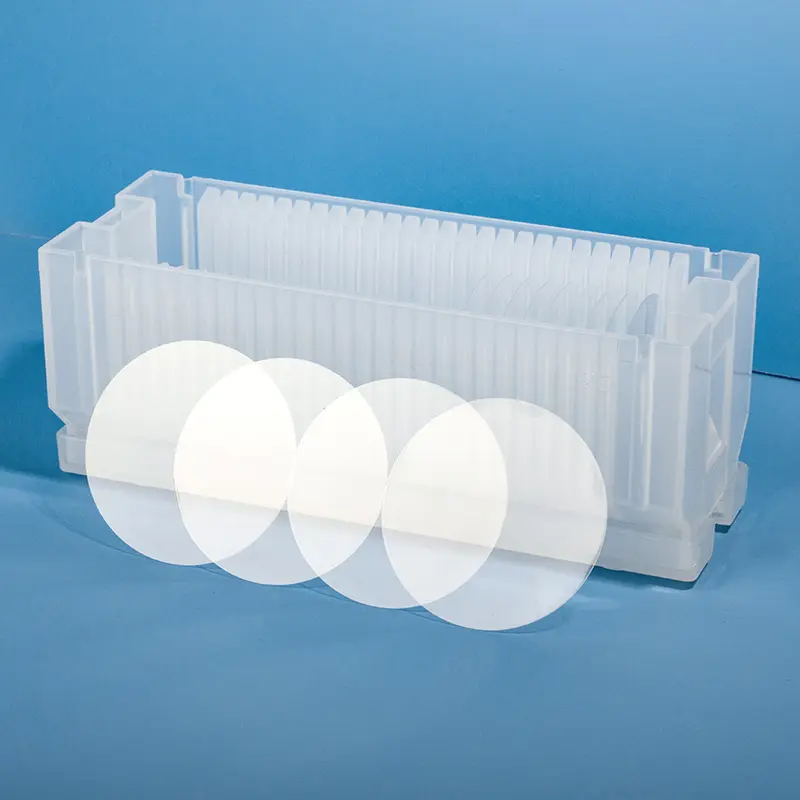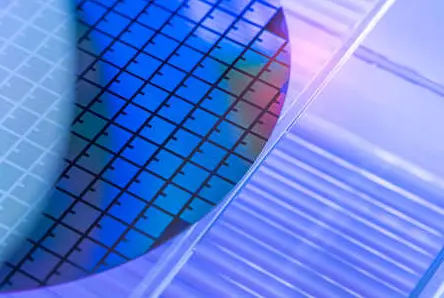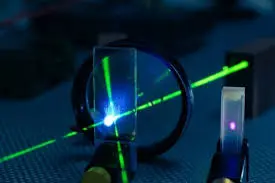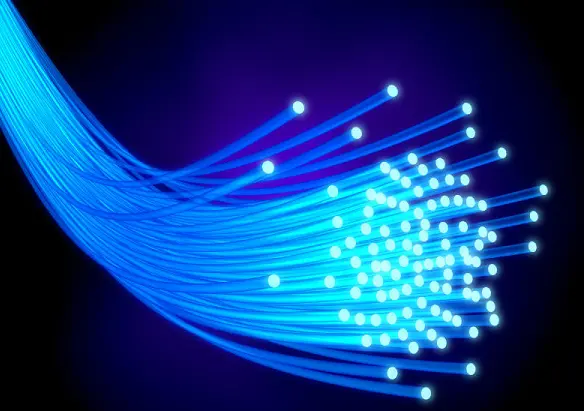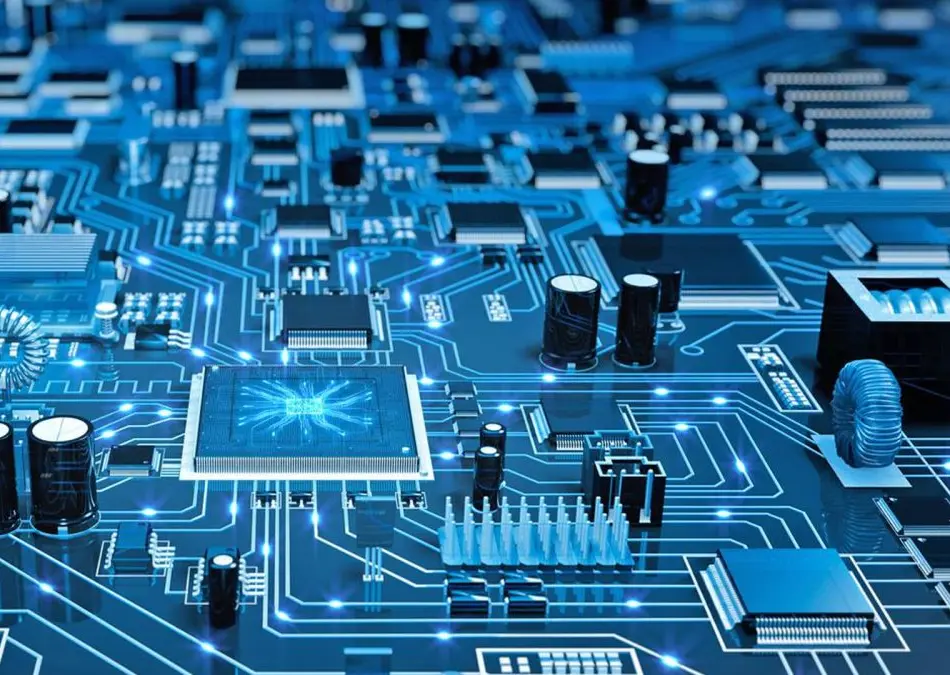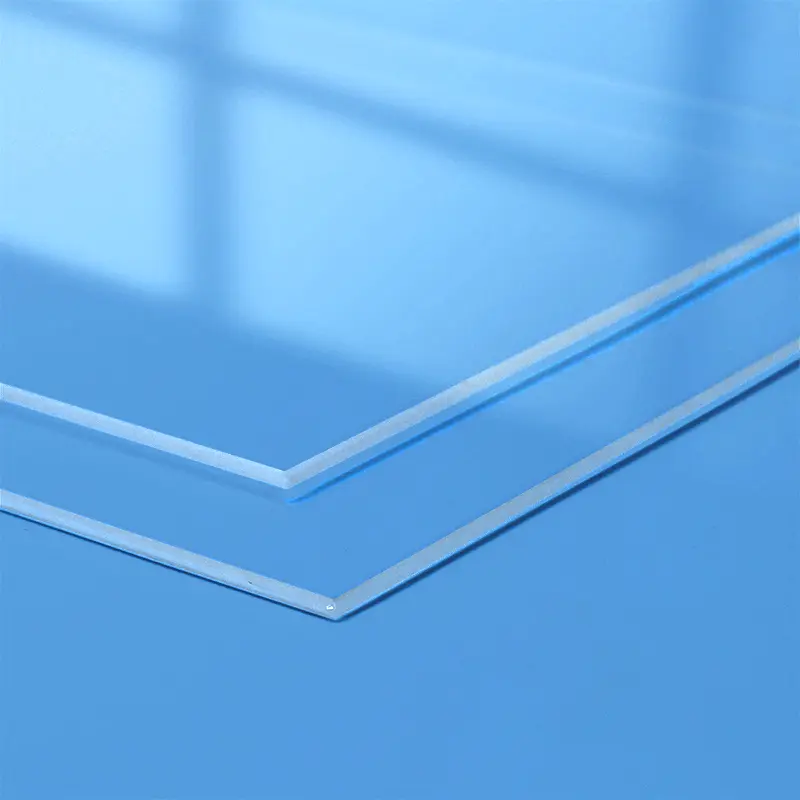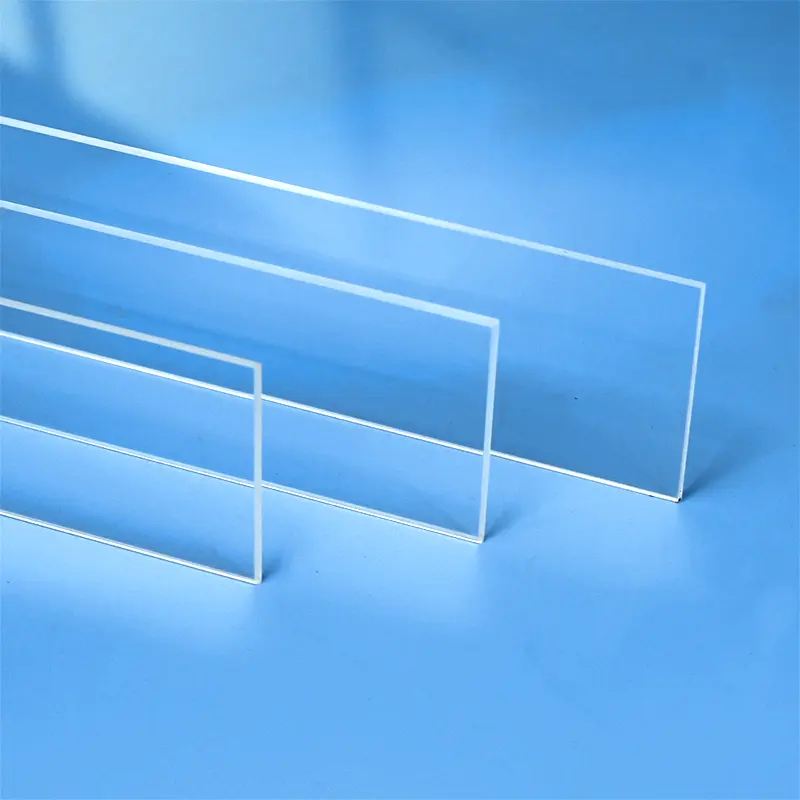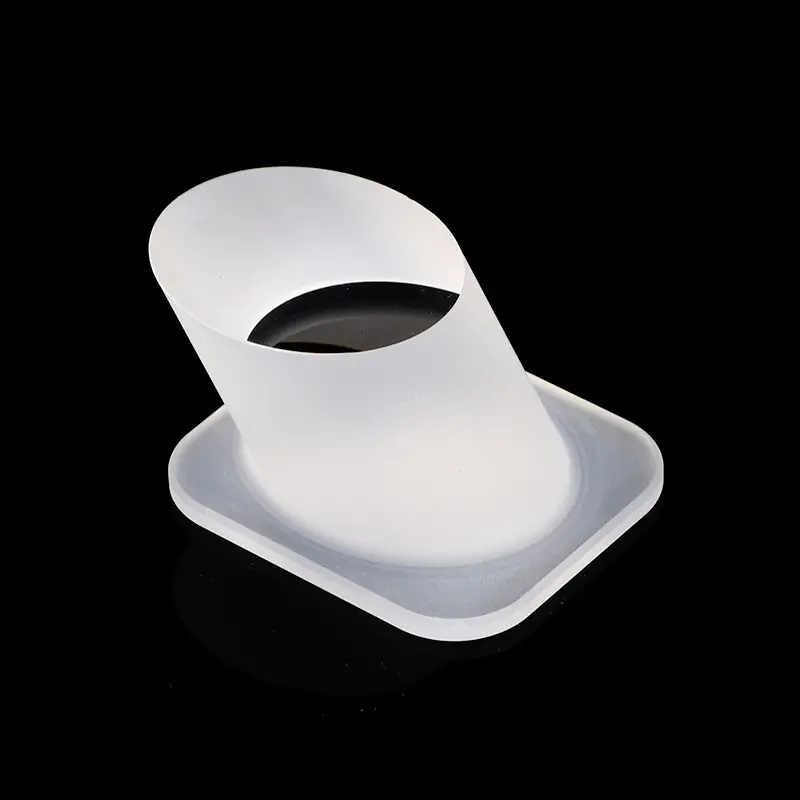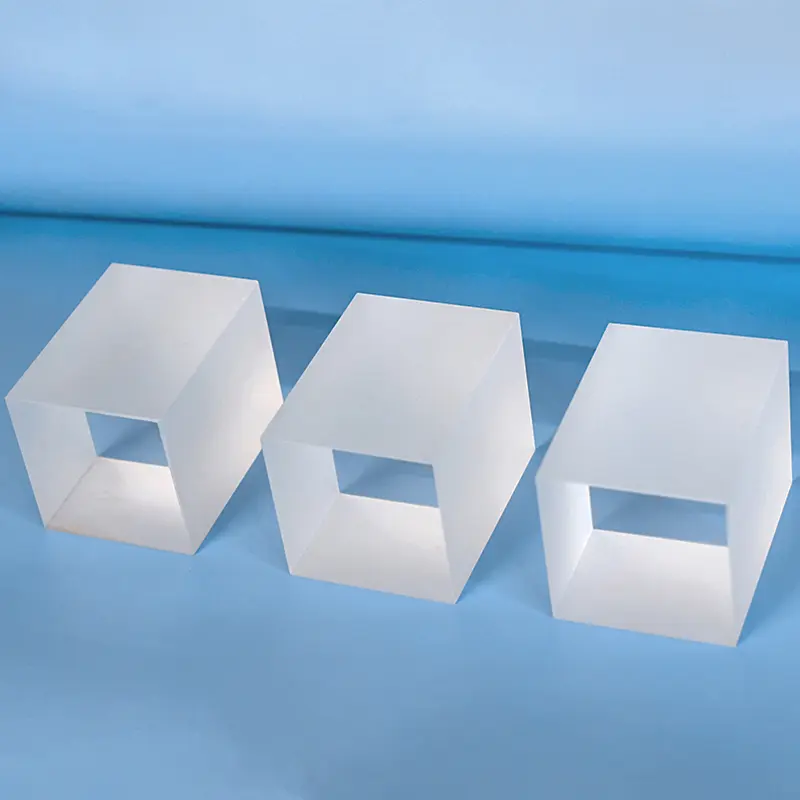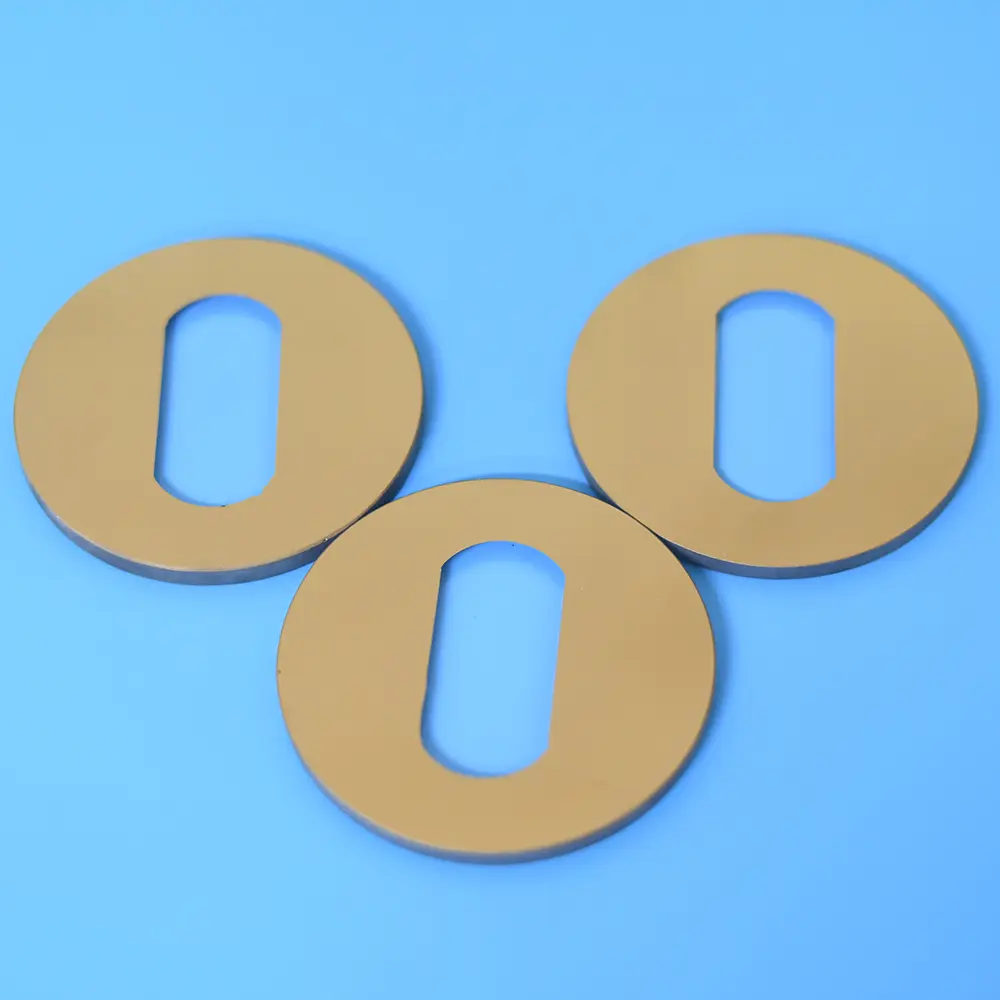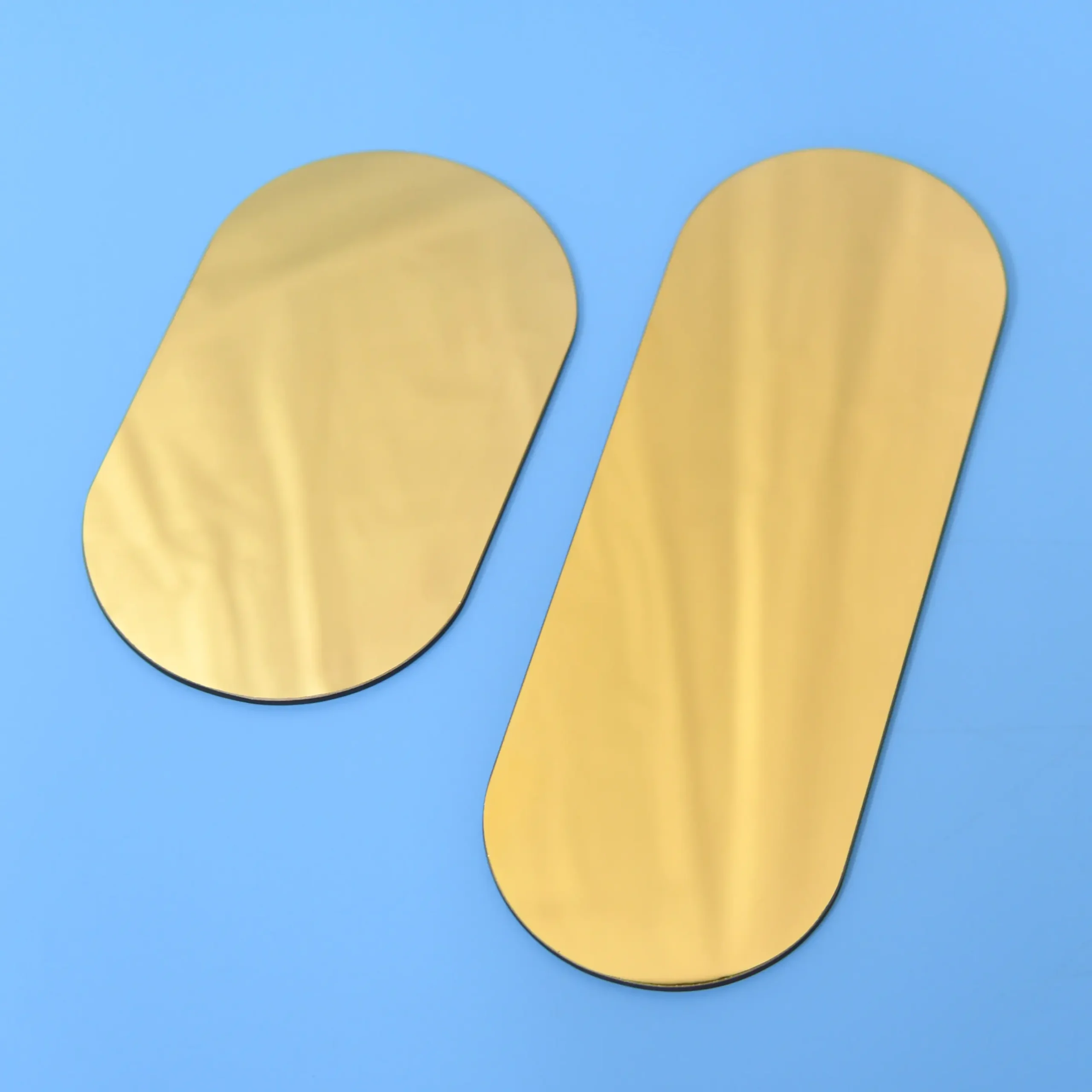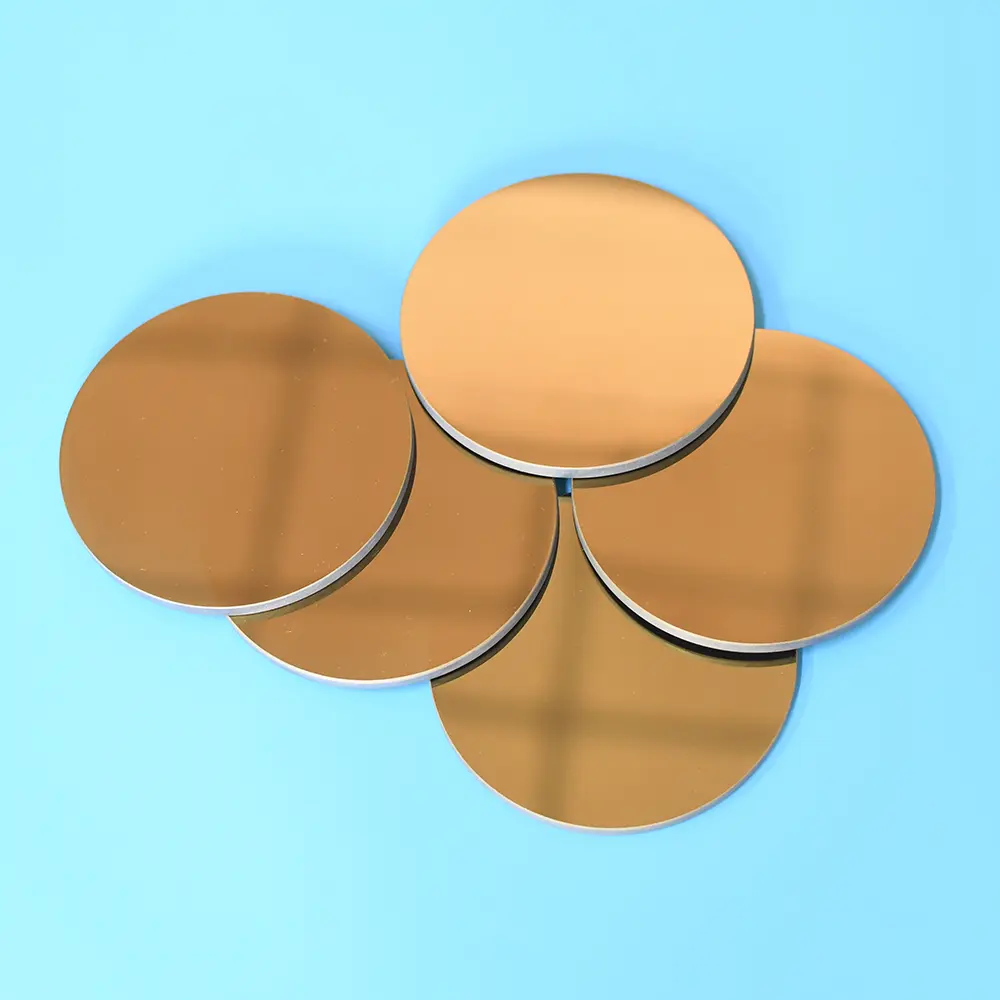Our Quartz Wafers are engineered from ultra-high purity fused silica. We provide custom fused silica wafers and quartz substrates specifically designed for demanding semiconductor, optical, and UV applications. These wafers deliver exceptional flatness, thermal stability, and chemical resistance.
| Property Content | Property Values |
|---|---|
| SiO2 | 99.99% |
| Density | 2.2×10³ kg/cm³ |
| Hardness | 5.5 - 6.5 Mohs' Scale 570 KHN 100 |
| Tensile Strength | 4.8×10⁷ Pa (N/mm2) (7000 psi) |
| Compression Strength | >1.1×10⁹ Pa (160,000 psi) |
| Coefficient of Thermal Expansion | 5.5×10⁻⁷ cm/cm·°C (20°C-320°C) |
| Thermal Conductivity | 1.4 W/m·°C |
| Specific Heat | 670 J/kg·°C |
| Softening Point | 1730°C (3146°F) |
| Annealing Point | 1210°C (2210°F) |
| Strain Point | 1120°C (2048°F) |
| Work Temperature | 1200°C (2192°F) |
| Electrical Resistivity | 7×10⁷ ohm cm (350°C) |
| Size | Customized |
| Logo | Customized Logo Accept |
High Purity and Transparency
Quartz wafers are made from high-purity silicon dioxide and exhibit extremely high transparency, making them ideal for optical applications, particularly across the ultraviolet to infrared spectrum.
High-Temperature Resistance
Quartz wafers can withstand very high temperatures, with a softening point around 1730°C. They can be used for extended periods at 1100°C and withstand temperatures up to 1450°C for short durations, making them suitable for high-temperature process environments.
Chemical Stability
Quartz wafers exhibit high resistance to most chemicals, except for hydrofluoric acid. This makes them very stable in both chemical laboratory and industrial applications.
Piezoelectric Effect
Single-crystal quartz wafers possess a piezoelectric effect, meaning they generate an electrical charge when subjected to mechanical stress. This property is crucial in the manufacturing of electronic devices like crystal oscillators and sensors.
Application Scenario
Semiconductor Manufacturing
Quartz wafers play a crucial role in semiconductor manufacturing, especially in silicon wafer fabrication and wafer processing. They are used to create quartz crucibles for wafer IC carriers (single crystal pulling) and as quartz components, such as quartz diffusion tubes, quartz flanges, and quartz furnace tubes, in processes like oxidation, epitaxy, photolithography, etching, and diffusion.
Quartz wafers are essential in semiconductor manufacturing because they provide a high-temperature resistant, chemically stable, and electrically insulating substrate. This is indispensable for wafer processing and integrated circuit fabrication. The purity and physical properties of quartz wafers directly impact the performance and reliability of semiconductor devices.
The high transparency and broad spectral transmission of quartz wafers make them ideal materials for manufacturing high-end optical components, such as lenses, windows, and filters. These properties ensure effective light transmission and precise control, which are critical for enhancing the performance of optical systems.
The piezoelectric effect of quartz wafers makes them widely applicable in electronic devices, particularly in the manufacturing of crystal oscillators and sensors. The piezoelectric effect allows quartz wafers to generate an electrical charge when subjected to mechanical stress, which is crucial for precisely controlling frequencies and measuring minute changes.
Frequently asked questions
We specialize in the end-to-end manufacturing of high-purity quartz glass components. Our core product lines include:
Quartz Tubing & Rods: A wide range of diameters and specifications.
Quartz Plates & Discs: Precision-cut and polished for optical and industrial use.
Quartz Labware: A full suite of standard and custom glassware, including beakers, flasks, and boats.
Semiconductor-Grade Quartz: High-purity components like process tubes and carriers for semiconductor fabrication.
Custom Fabricated Components: We can produce complex parts tailored to your unique designs and specifications.
Yes. Custom fabrication is at the core of our business. With over a decade of specialized experience, we partner with companies to provide expert OEM/ODM services. Our capabilities include welding, grinding, drilling, polishing, bending, and other precision processing techniques to create components that meet your exact requirements.
Quality is paramount in our manufacturing process. We are an ISO 9001:2015 certified manufacturer, ensuring that our processes meet international quality management standards.Our products also undergo rigorous SGS testing for purity and performance. We use high-purity raw materials (up to 99.998% SiO2) to produce fused quartz and fused silica products with exceptional thermal stability, high-temperature resistance, and chemical inertness.
We've streamlined our process to be as efficient as possible:
Submit Your RFQ: Send us your technical drawings, specifications, and requirements via our website contact form or email.
Rapid Response: You can expect an initial response within minutes and detailed communication within half an hour.
Design & Proposal: We will deliver a detailed design proposal and a competitive quote within 24 hours.
Prototyping & Production: Upon approval, we move swiftly from prototyping to full-scale production to meet your deadlines.
Partnering with Aoxin Quartz offers several key advantages:
Proven Expertise: With 10+ years in the industry, we have the technical knowledge to tackle complex challenges.
One-Stop Solution: We manage the entire production process, from sourcing high-purity raw materials to fabricating and finishing complex components.
Competitive Value: Located in a major quartz production hub, we leverage an efficient supply chain and advanced manufacturing to offer exceptional quality at a competitive price point.
Dedicated Partnership: Over 90% of our clients become long-term partners. We are committed to your success through responsive service, reliable quality, and innovative solutions.

